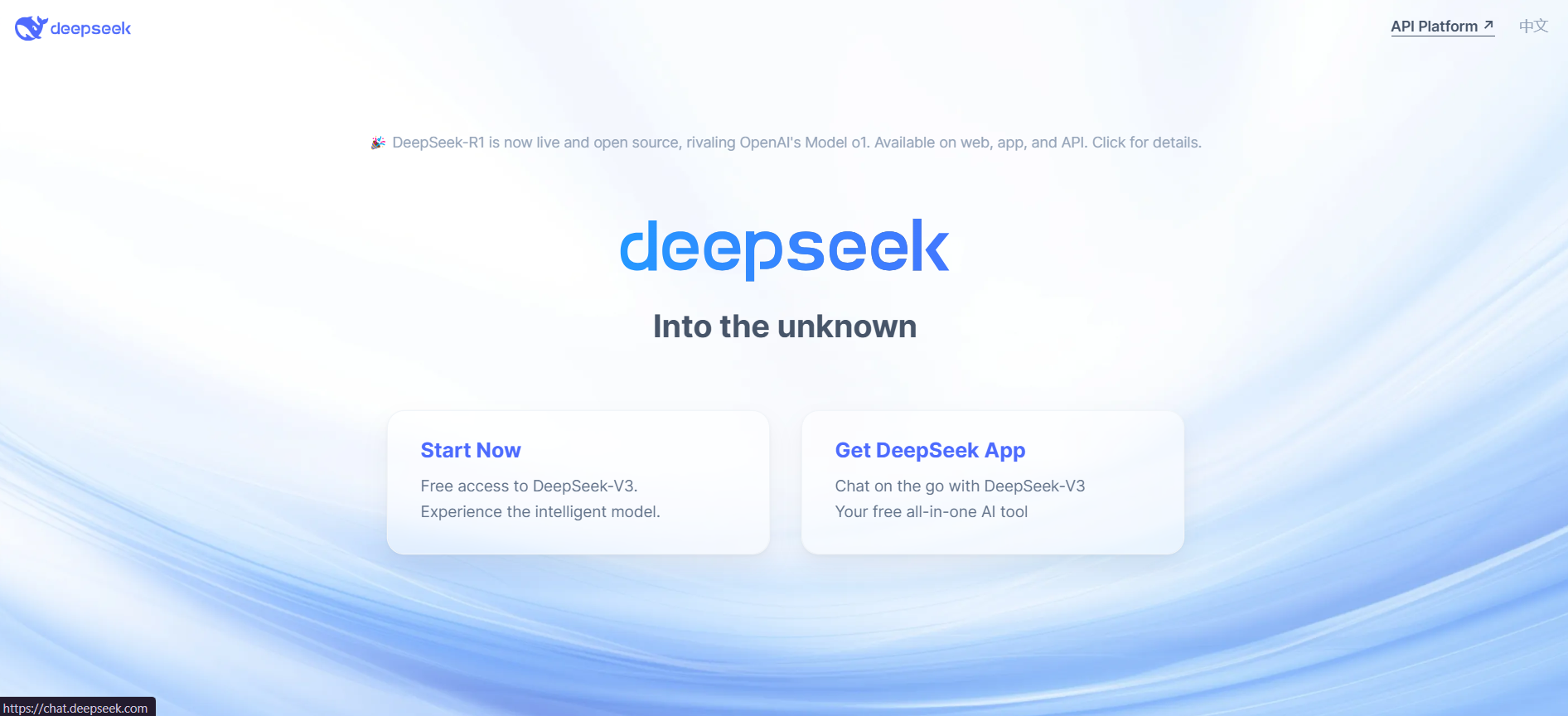DeepSeek API Overview: The Complete Guide for 2025
An in-depth overview of the DeepSeek API, including how it works, its capabilities, how to access it, and what developers can expect.

DeepSeek API Documentation
Key Features and Supported Models
- Advanced AI: Access to powerful LLMs (like DeepSeek R1 and v3).
- Multilingual: Works with English, Chinese, and more.
- Content generation: Summarization, chat, code suggestions, etc.
Accessing Official Documentation
You can find DeepSeek's official docs at https://platform.deepseek.com, which explain how to structure requests, what models are available, and what parameters you can customize.
Additional community guides and third-party usage examples can be found on GitHub (example) and Medium (e.g., this developer's setup guide).
Navigating the Docs
Look out for:
POSTendpoints for text generation- Example
request bodyformats - Code examples in Python and JavaScript
Best Practices
- Always test your prompts using a testing tool before deployment
- Start with small request payloads to keep costs low
- Monitor your usage regularly
API Endpoint Details
Overview
Endpoints are URLs you send your requests to. For example:
POST https://api.deepseek.com/v1/chat/completions
This is where you send your prompt and receive a response. For more on endpoints and integration, see DeepSeek API Endpoints or DeepSeek API Data Formats Guide.
Request/Response Formats
- Request body: Usually includes model name, messages, temperature, etc.
- Response: Comes back with the AI-generated result and metadata
Rate Limits & Error Handling
- Most APIs have rate limits (e.g., 60 requests/minute)
- Handle common errors like 429 (too many requests) or 401 (invalid API key)
More on API rate limits from Postman
Example API Call (Python)
import requests
headers = {"Authorization": "Bearer YOUR_API_KEY"}
data = {
"model": "deepseek-chat",
"messages": [{"role": "user", "content": "What's the weather like today?"}]
}
response = requests.post("https://api.deepseek.com/v1/chat/completions", json=data, headers=headers)
print(response.json())
API Key Management
Getting Your API Key
To start using DeepSeek, you'll need an API key. This is like your personal access pass.
- Create an account
- Go to the API Keys section in your dashboard
- Click "Generate Key"
How API keys work – Google Cloud Docs
Security Tips
- Don't expose your API key in public repos
- Store it using environment variables
- Regenerate if you suspect misuse
Monitoring Usage
The dashboard provides real-time tracking of your usage and lets you manage quota limits.
API URLs Explained
Base URL and Region
DeepSeek's API base URL is simple:
https://api.deepseek.com
Currently, DeepSeek runs globally—no region-specific subdomains yet.
Versioning
Use /v1/ or /v3/ depending on the model you're accessing. Always check the docs before switching versions.
Understanding API Versioning – REST Best Practices
Public vs Private Endpoints
- Public endpoints are open to all with an API key
- Private endpoints might require special permission or contracts
API Cost & Pricing Overview
Is DeepSeek API Free?
Yes, DeepSeek does offer a free tier, which is great for testing and small projects. However, for production use, you'll likely need a paid plan. For a direct comparison of free and paid plans, check DeepSeek API Free Tiers or DeepSeek API Pricing Reddit Insights.
Pricing Tiers
- Free tier: Limited requests/month
- Pay-as-you-go: Based on usage
- Subscription: Monthly fee with fixed limits
DeepSeek pricing info can be found directly at https://platform.deepseek.com/pricing.
Cost Optimization Tips
- Cache frequent responses
- Use smaller models for lightweight tasks
- Set temperature and max tokens wisely
API cost optimization tips – RapidAPI
Sample Cost Comparison
| Feature | DeepSeek R1 | OpenAI GPT-4 | Claude 3 |
|---|---|---|---|
| Monthly cost | $20+ | $30–$60+ | $20–$50+ |
| Free access | Yes | Limited | Limited |
| API speed | Fast | Fast | Varies |
FAQ Snippets
- Is DeepSeek API free? – Yes, there's a free tier.
- How much does DeepSeek cost? – It depends on your usage, but there are flexible options.
- How to optimize API cost? – Use caching and limit token usage.
Related Questions Answered
What is an API?
An API is a way for different software systems to talk to each other. Think of it like a restaurant menu—you choose a service (like "generate text"), send in your order, and get back a result.
API for beginners – FreeCodeCamp
What is an API endpoint?
It's the URL you send your API request to. For DeepSeek, this might look like /v1/chat/completions.
How do I get an API key?
Sign up at DeepSeek's platform, go to your dashboard, and click "Generate API Key."
What is an API request?
It's the data you send to DeepSeek's servers, asking them to do something (like generate a reply).
What is an API token?
Your API key is also called a token—it authenticates you.
What's the difference between REST API and SOAP API?
REST APIs (like DeepSeek's) use simple HTTP methods, while SOAP is more complex and mostly used in enterprise systems.
What is a payload in an API?
The payload is the body of your API request—it carries the data the server needs.
The DeepSeek API offers a flexible, powerful way to integrate AI into your applications. With thoughtful request design, cost optimization, and secure key management, you can make the most of what DeepSeek offers. Whether you're building a chatbot, summarizing content, or testing new features, DeepSeek provides the tools to help you succeed. For more on troubleshooting and performance, see DeepSeek API Troubleshooting Roadblocks.
If you're just starting, try out the free tier, explore the model catalog, and begin experimenting with your first API request. Happy coding!